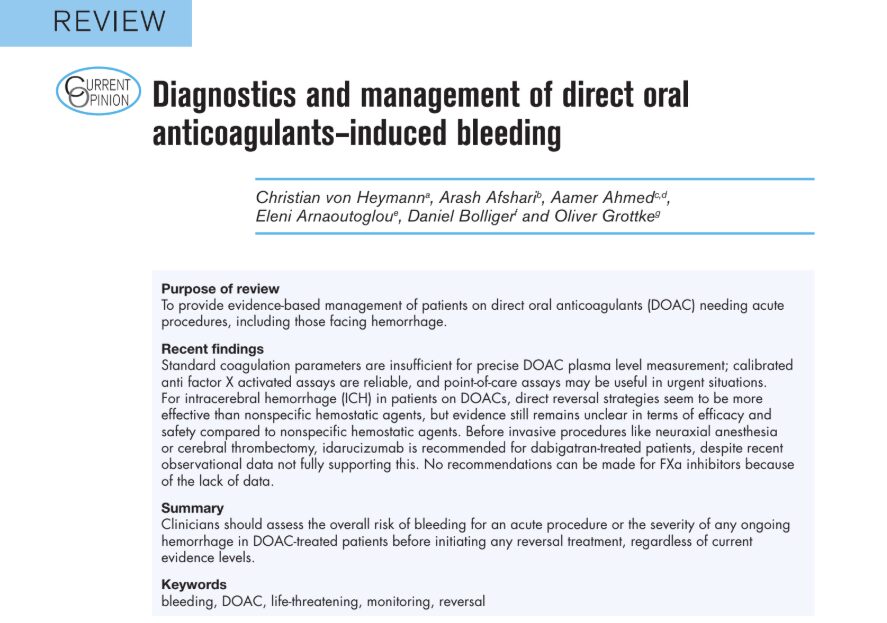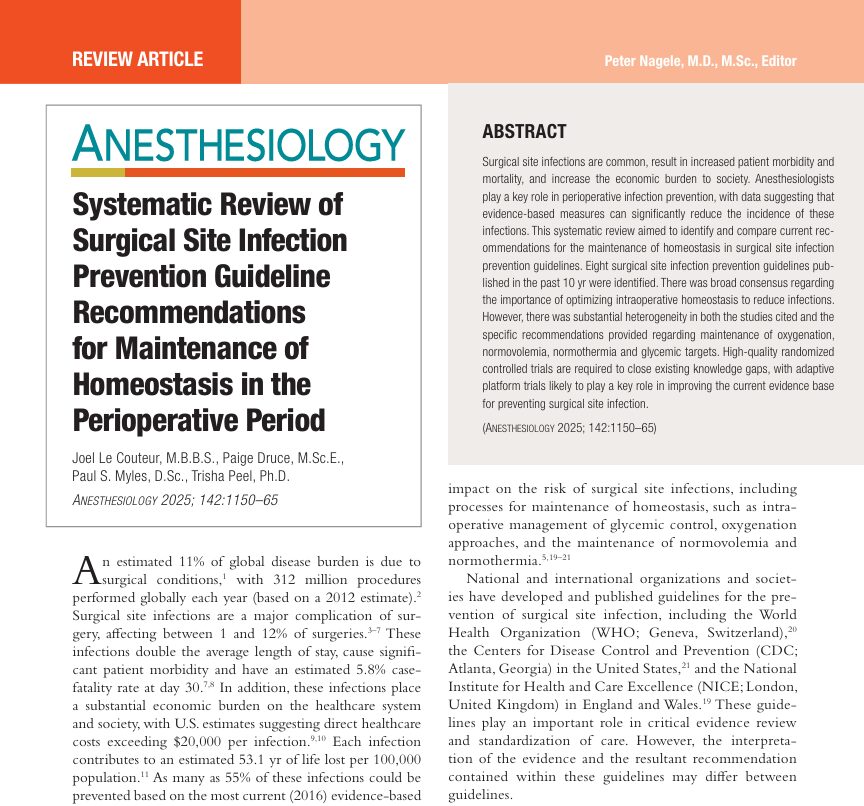Direct Oral Anticoagulants (DOACs) play a crucial role in managing thromboembolic conditions, offering predictable pharmacokinetics and fewer dietary restrictions compared to vitamin K antagonists. However, bleeding complications remain the most significant risk. A 2025 review by von Heymann et al. sheds light on the latest evidence-based approaches for diagnosing and managing DOAC-induced bleeding, particularly in urgent and life-threatening scenarios.
Understanding DOACs and associated bleeding risks
DOACs fall into two categories:
- Thrombin inhibitors: Dabigatran
- Factor Xa (FXa) inhibitors: Apixaban, Rivaroxaban, Edoxaban
Major concerns:
- Life-threatening bleeding (e.g., intracerebral hemorrhage)
- Challenges in monitoring anticoagulant activity
- Limited clinical trial data supporting antidote use
Laboratory monitoring: what works and what doesn’t
Routine coagulation tests like PT, aPTT, and thrombin time offer only qualitative data and may miss significant DOAC plasma levels.
Preferred diagnostic tools:
- Calibrated anti-FXa assays: Most reliable for FXa inhibitors
- Diluted thrombin time (dTT) and Ecarin clotting time (ECT): Effective for dabigatran
- DOAC dipsticks: Useful for rapid exclusion in emergencies
ClotPro® and viscoelastic tests: Show promise, but need validation
Reversal strategies: antidotes vs nonspecific agents
Key antidotes:
- Idarucizumab: For dabigatran reversal
- Andexanet alfa: For FXa inhibitor reversal
Nonspecific agents:
- Prothrombin complex concentrate (PCC)
- Activated PCC (aPCC)
- Recombinant factor VIIa (rFVIIa) – less preferred due to inconsistent efficacy
Step-by-step: managing DOAC-associated intracerebral hemorrhage (ICH)
- Confirm diagnosis and timing of last DOAC dose
- Determine DOAC type:
- Dabigatran → administer idarucizumab
- FXa inhibitors → consider andexanet alfa or PCC
- Dabigatran → administer idarucizumab
- Monitor for hematoma expansion
- Balance thrombotic risk when using reversal agents
- Consider a neurosurgical consultation if deterioration occurs
Thresholds for reversal: what plasma levels justify intervention?
- < 30 ng/mL: generally safe for surgery
- 30–50 ng/mL: gray zone
- 50 ng/mL: consider reversal, especially if bleeding or urgent high-risk procedure
No robust randomized controlled trial (RCT) evidence supports these thresholds, but they are widely referenced in guidelines.
Severe bleeding under FXa inhibitors: what’s the best option?
- Andexanet alfa: Shown to reduce hematoma expansion and improve hemostasis in trials (e.g., ANNEXA-I)
- PCC: More accessible; similar outcomes in many studies
- aPCC and rFVIIa: Alternative when other agents are unavailable; higher thrombotic risk
Key comparison (ANNEXA-I trial):
- Hemostatic efficacy: 67% (andexanet) vs 53% (PCC)
- 30-day mortality: similar
- Thrombotic events: higher in andexanet group (10.3%)
Managing dabigatran-related major bleeding
First-line: Idarucizumab (5 g IV)
- Stops bleeding within 2.5 hours in 68% of patients
- Reversal success in 90%+ based on coagulation markers
- 30-day mortality: ~13.5%
- Limitations: non-randomized studies, some rebound anticoagulant levels
Alternative: PCC or aPCC
- Reserved for situations where idarucizumab is unavailable
Managing DOAC overdose without bleeding
Not routinely reversed unless at high bleeding risk.
Supportive measures:
- Activated charcoal (early ingestion)
- Hemodialysis (for dabigatran)
- Diuresis or hemadsorption (for FXa inhibitors)
Pre-procedural management: when time is short
For urgent procedures:
- Dabigatran: Use idarucizumab before neuraxial anesthesia or thrombectomy
- FXa inhibitors: No clear consensus; clinical judgment required
NOTE: A “wait and see” strategy may be appropriate if DOAC levels are <50 ng/mL.
Conclusion
The management of DOAC-induced bleeding is evolving. While specific antidotes like idarucizumab and andexanet alfa offer targeted reversal, questions remain about their superiority over PCCs, particularly in ICH. Laboratory monitoring, guideline-based thresholds, and individualized patient assessments remain central to safe and effective care.
Case of The Week with Anesthesia Assistant
Which reversal strategy should you choose for a patient on DOACs with severe bleeding?










